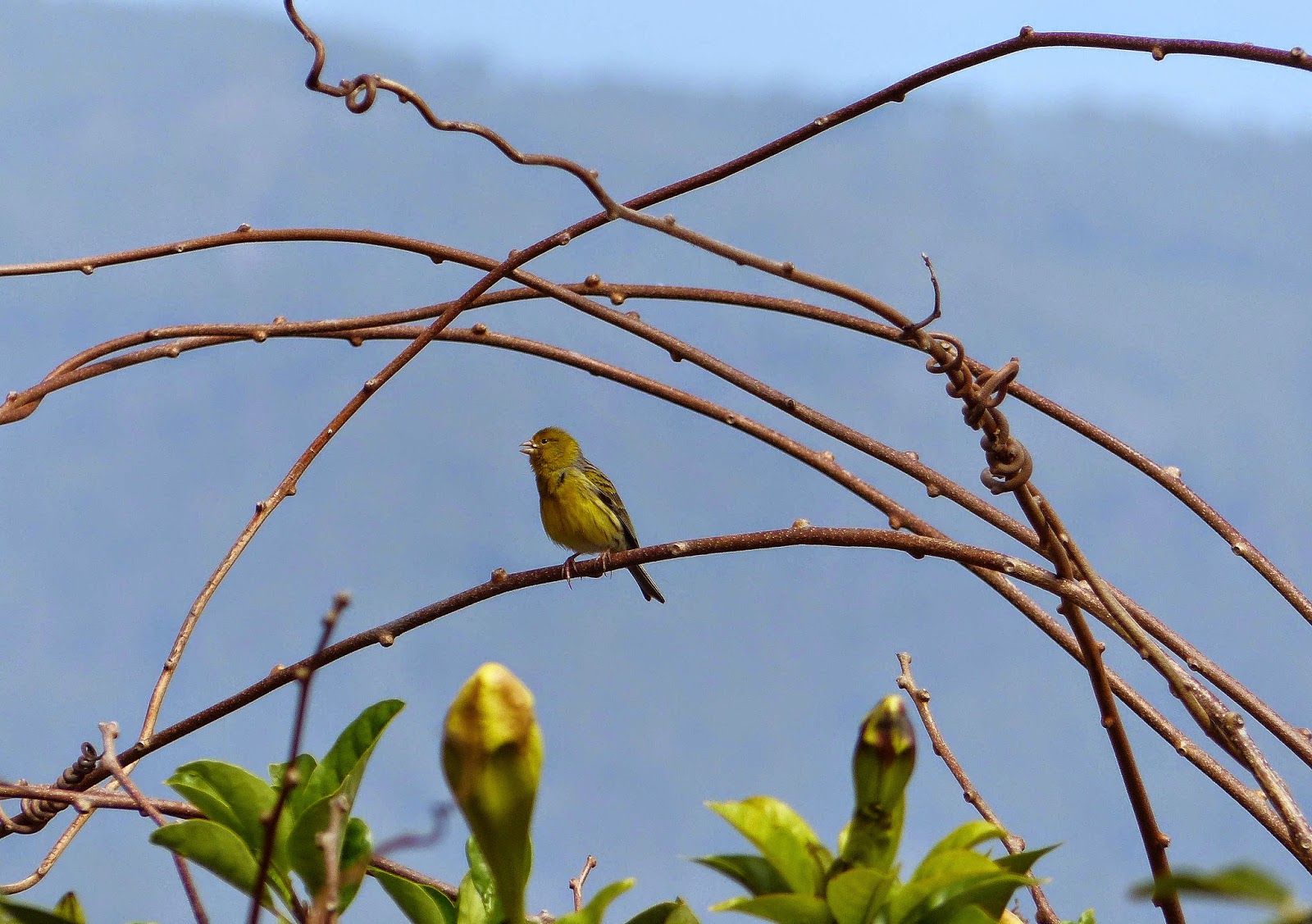This is a little late, but earlier in the month we were lucky enough to spend a week exploring the stunning island of La Palma, the most North Westerly of the Canary Islands. It's a wonderful mixture of temperate cloud (laurel) forest, dry scrubby slopes and volcanic rock. It is a paradise for walkers and during our week exploring we encountered few people.
We stayed near San Pedro, however wherever you choose to stay you will be sure to encounter Canary; we had 2 males singing in the garden and flocks of 20-30 birds were not uncommon.
 |
| Singing Canary |
Also on the garden list were Blackcap, Blackbird, African Blue Tit subspecies palmensis; and overhead Kestrel, the insularum subspecies of Common Buzzard and Chough were seen. All these species were also common around the island.
 |
| African Blue Tit, Cyanistes teneriffae palmensis |
We spent two days walking in the Laurel forest looking for the two target Pigeon species, Bolle's and Laurel Pigeon. We spent our first day at Cuba de la Galga, a thoroughly beautiful valley and well worth a visit. On our way up the valley we heard both species but the dense canopy makes catching a decent view rather tricky. We had some half decent views of Bolle's Pigeon but had to wait for flight views of a single Laurel Pigeon until we reached Somada Alta. The view from there is also particularly impressive. Our second day was spent at Los Tilos, where we heard and saw Bolle's but not Laurel Pigeon. Here the walk was just as beautiful, and along the way we encountered some incredibly tame La Palma Chaffinch.
 |
| Best we could manage.... but that tail is a give-away. Bolle's Pigeon |
 |
| Cracker. La Palma Chaffinch |
Our next day was spent exploring the south of the island, where the recent (1971) volcanic eruption has left the landscape looking rather different to the rest of the island. I'd read that this was a good area for Berthelot's Pipit, and we weren't disappointed. We encountered our first pair around the visitor centre for Las Salinas at Punta de Fuencaliente. There were also 3 Turnstone present on the saline lagoons and a few distant Cory's Shearwater passing offshore. We then moved up to Volcan de San Antonio where we had at least another 4 Berthelot's Pipit along with Chough and Canary.
 |
| Berthelot's Pipit at Volcan de San Antonio |
Our last day exploring was spent with a trip up to the Observatorio Astrofisico, an impressive array of 14 telescopes across the highest points of the island, around 2400 metres above sea level. Here we again saw good numbers of Chough, but the highlight was finding a splendid male Spectacled Warbler in the scrub around the MAGIC telescope. On the road up, we were also treated to a magical experience with a pair of very tame Ravens at the parking place for the Pico de la Nieve. They had clearly learnt that stopping cars often meant food. It was a real privilege being so close to such an impressive bird.
 |
| What a bill! Raven |
 |
| Raven and I |
 |
| Smart male Spectacled Warbler |
Our final evening was spent around the El Pilar refuge. On the way we stopped for coffee on the seafront at Puerto Naos, where in 45 minutes we recorded well over 100 Cory's Shearwater passing and a pod of Short-fined Pilot Whale! We then walked from El Pilar and headed up onto the rim of the volcano where we were treated to more Chough, some brilliant views of Western Canary Island Goldcrest and a screaming flock of over 60 Plain Swift. On top of all this, we were able to witness a stunning sunset and make the most of a brief spell of dark sky before the full moon rose.
 |
| Western Canary Island Goldcrest |
 |
| Chough |
 |
| Venus rising over the Atlantic |